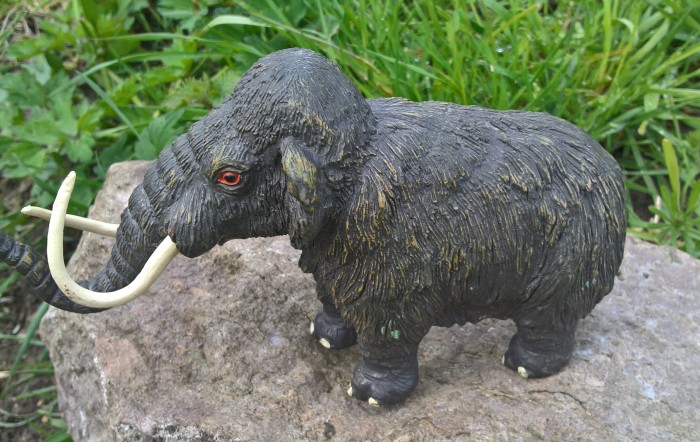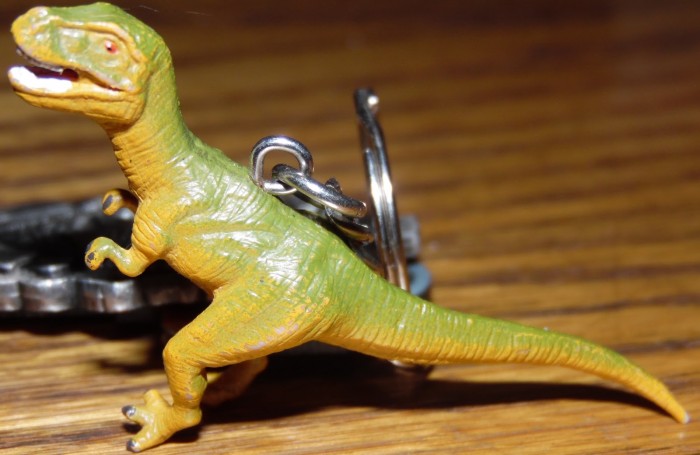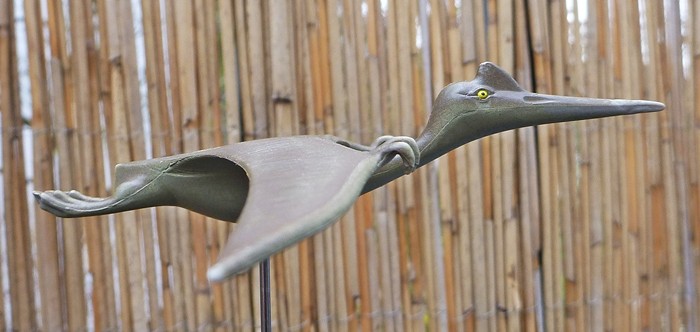Review and photographs by Indohyus, edited by Suspsy
In many ways, the giant ground sloths are similar to prosauropods in that they are a familiar group, but only one member gets love in toy form. The other group of giant xenarthrans, the glyptodonts, tend get at least get two representatives, but only Megatherium gets a toy form among giant ground sloths.
Review: Velociraptor (Feathered Version by Papo)

5 (127 votes)
Review and photos by Patrx, edited by Suspsy
Available from Amazon.com here.
If ever there was a dinosaur in need of a public relations team, it’s Velociraptor. It seems no matter how far we march into the feathery future, the poor protobird still seems to have one sickle-clawed toe in the past, and this is particularly evident in the area of toys and collectibles.
Available from Amazon.com here.
If ever there was a dinosaur in need of a public relations team, it’s Velociraptor. It seems no matter how far we march into the feathery future, the poor protobird still seems to have one sickle-clawed toe in the past, and this is particularly evident in the area of toys and collectibles.
Review: Hylaeosaurus (Deluxe by CollectA)
Review: Brachiosaurus (Jurassic Hunters by Geoworld)
Review: Plateosaurus (Jurassic Hunters by Geoworld)
Video: Ptop pten pterosaur ptoys
0 (0 votes)
Top 10 pterosaur toys of all time, as voted by the Dinosaur Toy Forum Community, 2016. Agree or disagree with this top ten? Have your say in the active poll, where after voting you can also see all of the results: https://dinotoyblog.com/forum/index.php?topic=4442.0
Review: Woolly Mammoth (AAA)

3.4 (9 votes)
Review and photographs by Indohyus, edited by Suspsy
Mammuthus primigenius, the fabled woolly mammoth, is an iconic Ice Age animal well known around the world, a symbol of the amazing adaptability of mammals. This mighty beast is the first prehistoric mammal to be immortalized in plastic by toy companies.
Mammuthus primigenius, the fabled woolly mammoth, is an iconic Ice Age animal well known around the world, a symbol of the amazing adaptability of mammals. This mighty beast is the first prehistoric mammal to be immortalized in plastic by toy companies.
Review: Pterodactyl (Tyco)
Review: Triceratops with Stegosaurus (Jurassic World Hero Mashers by Hasbro)
Review: Tyrannosaurus rex (Keychain from Sue at the Field Museum by Safari Ltd.)

2.9 (9 votes)
Review and photos by Takama, edited by Suspsy
Everyone knows about the now-defunct Carnegie Collection, which was a collaboration between Safari Ltd and the Carnegie Museum of Natural History. As far as I know, this was one of the longest running museum lines, with a lifespan of over 27 years, before being cancelled due to disagreement between the two entities.
Everyone knows about the now-defunct Carnegie Collection, which was a collaboration between Safari Ltd and the Carnegie Museum of Natural History. As far as I know, this was one of the longest running museum lines, with a lifespan of over 27 years, before being cancelled due to disagreement between the two entities.
Review: Smilodon (AAA)

3.7 (7 votes)
Review and photographs by Indohyus, edited by Suspsy
Smilodon. Whether it’s populator, fatalis, or gracilis, one thing is certain: this was a powerful felid, the epitome of ancient mammal predators. Originally from North America, then successfully emigrating to South America during the Great Faunal Interchange, there are few who haven’t heard of this mighty mammal, especially for its 28 cm sabre teeth.
Smilodon. Whether it’s populator, fatalis, or gracilis, one thing is certain: this was a powerful felid, the epitome of ancient mammal predators. Originally from North America, then successfully emigrating to South America during the Great Faunal Interchange, there are few who haven’t heard of this mighty mammal, especially for its 28 cm sabre teeth.
Review: Triceratholestes (Predasaurs DNA Fusion by Simba)

1.8 (10 votes)
Review and photos by Takama, edited by Suspsy
After reviewing the blog’s first hybrid dinosaur that has nothing to do with Jurassic Park, I decided to review the rest of the figures I own in this series. Picking the next one to review was something I did at random, and here is the winner.









